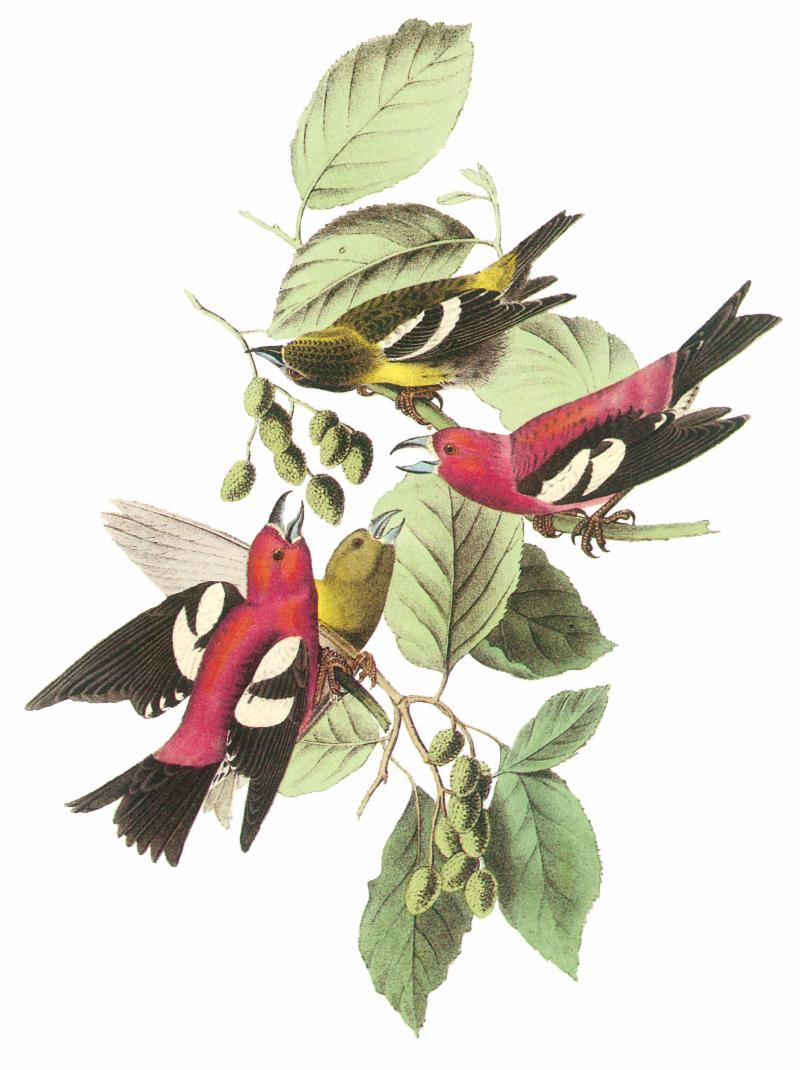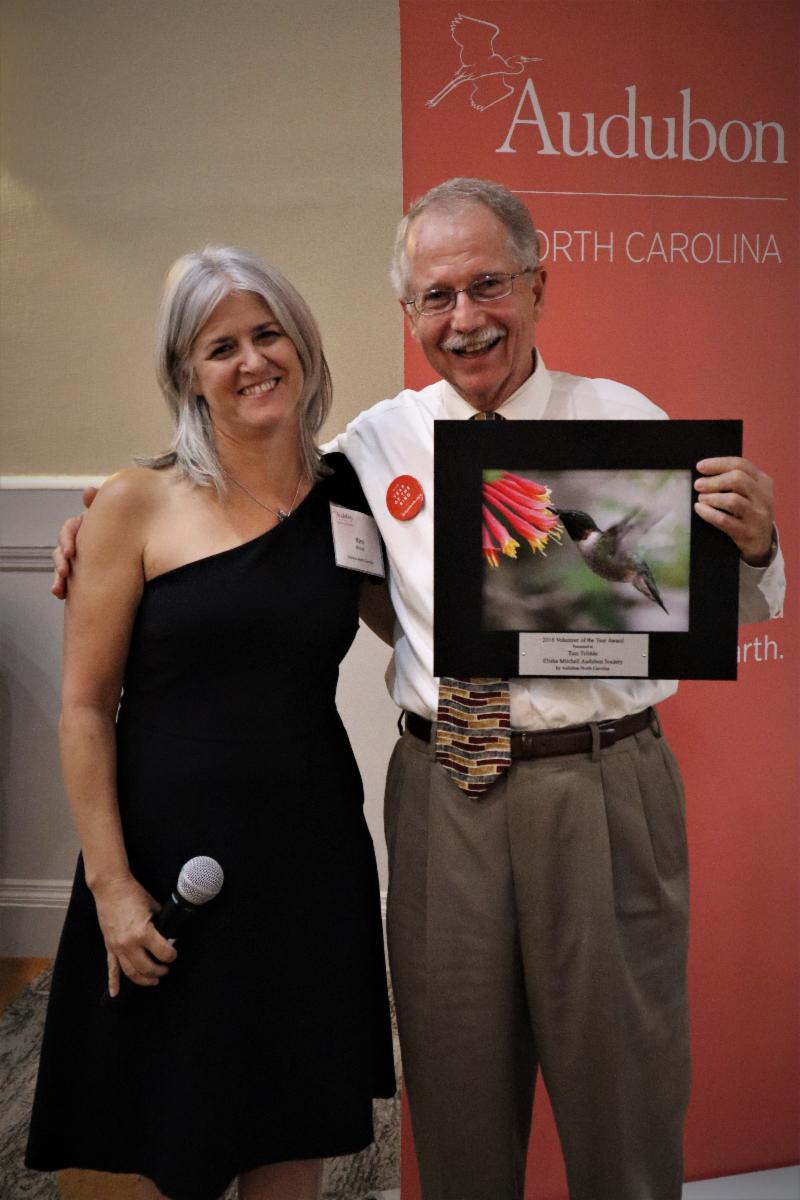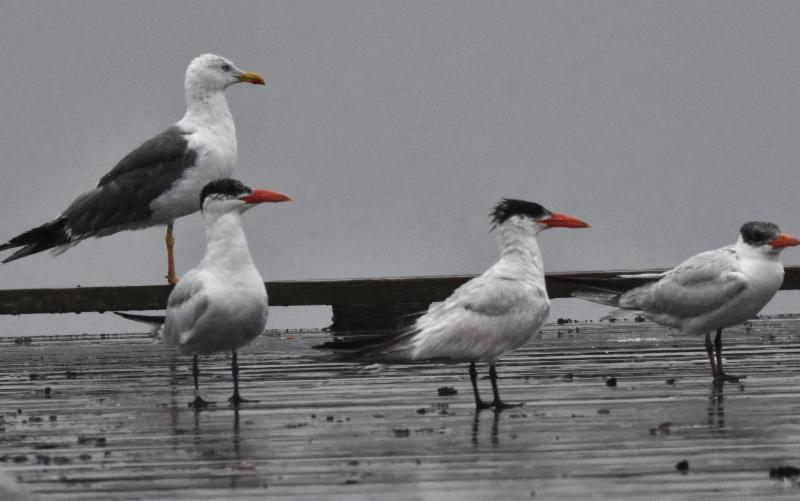
October 2018
Newsletter
|
|
UPCOMING EVENTS
|
In This Issue:
*Special Note:
There will be no November
Program Meeting.
|
Sat, Oct 13, 9am
Jackson Park Birdwalk
Sat, Oct 20, 9am
Swannanoa Valley Birdwalk
Sat. Nov 3, 9am
Beaver Lake Birdwalk
Tues. Nov 7, 6:30pm
EMAS Board Meeting
Sat. Nov 10, 9am
Jackson Park Birdwalk
Sat. Nov 17, 9 am
Swannanoa Valley Birdwalk
|
|
This year, Elisha Mitchell Audubon adopted a formal Advocacy Plan that guides our efforts to encourage members and supporters to speak up on behalf of birds and the habitats they need. National Audubon's research shows that western North Carolina is a crucial climate stronghold, a place where birds are likely to seek sanctuary from the effects of a changing climate. To avert the worst impacts of climate change, we all need to do our part to help transition to clean energy. In support of our advocacy goals and in recognition of the threat to birds, EMAS teamed up with High Country Audubon in Boone to apply for an Audubon in Action grant. Our proposal was successful and was one of only 6 projects on advocacy awarded nationally to Audubon chapters!
The grant's goal is to train activists - Audubon members and supporters - in the skills and tools needed to engage elected officials, and to learn to put these new skills to work in a state-level, clean energy campaign. A second goal of the project is to grow a new generation of Audubon leaders. EMAS and High Country Audubon are working to establish two new Audubon college clubs, at UNC Asheville and Appalachian State University. Those efforts are already underway, led by a corps of ambitious and dedicated young college students.
Please consider working with us and becoming an Audubon Ambassador. You don't need to be a birder, you simply need to care about our world. As my Audubon bumper sticker reads, "Protect Birds and You Protect the Earth." We will hold the training session in early 2019, within driving distance of Asheville. The "graduates" will leave prepared to engage people in clean-energy advocacy actions such as starting a petition; writing, emailing, and calling a legislator; or writing letters to the editor and op-eds.
I often conclude presentations by saying that "Birds sing beautifully but they cannot speak. It is up to us to speak for them." Help us be a voice for birds!
Tom Tribble
President, EMAS Board of Directors
|
|
7 p.m., Tuesday October 16
Reuter Center, UNCA
|
Remote, c
hallenging and so remarkably beautiful that its p
oetic
namesake often found himself at a loss for words, the John Muir Trail is considered among the great hikes in Nor
th America. Extending 22
4 miles from Yosemite National Park southward to the lower 48's highest peak, Mount Whitney, the trail crosses the
rough towering mountain passes and through rich alpine valleys filled with a diverse array of wildflowers, uncounted montane lakes and streams, glaciers and complex geology and landforms. Rachel Muir will take us through the heart of this landscape, into the iconic Evolution Valley
, up Muir Pass and will explore other landmarks, as well as the ecology of the High Sierras and the history of the John Muir Trail.

Rachel Muir is a scientist emeritus with the United States Department of the Interior. An environmental scientist and ecologist by training, Rachel worked for a variety of Federal agencies and private firms over her 40-year career, including the EPA and the U.S. Fish and
Wildlife Service. She focused primarily on aquatic ecology, wetlands ecology, conservation of imperiled species and impact of environmental contaminants on wildlife and human health. Rachel resides in Arden and is an avid outdoors woman, hiker, triathlete and gardener. She is currently working on her second book, "Across the Heartland: in the Footsteps of John Muir."
EMAS programs are free and open to the public.
|
Ask Asheville City Council to Support 100% Renewable Energy
|
The Asheville City Council is set to vote on this important resolution on Tuesday, October 23. If you are an Asheville resident, p
lease consider taking a minute to email council members and ask them to pass the 100% renewable energy resolution. When you send your email to this address: [email protected] it automatically goes to each council member. Spread the word!
We know from National Audubon's landmark study on the impact of climate change and birds that more than half of the 588 North American bird species studied are likely to be in trouble due to changing climatic conditions.
It's up to us to act and speak up for the birds we love! So please consider emailing City Council today!
Thank you,
EMAS Board of Directors
|

They charm us with lovely plumage and melodious song,
our quest of them takes us to the fairest places;
to find them and uncover their secrets,
we exert ourselves greatly and live intensely.
-Alexander Skutch
You see but you do
not observe.
The distinction is clear.
Sir Arthur Conan Doyle
A Scandal in Bohemia
Why do we continue watching birds? I suppose the answer to this question varies from person to person, but I feel there might be some human trait in common which keeps people getting involved in this activity. If you would like to read more about what keeps us fascinated and involved with birding in all its activities,
follow the link.
- Ed. Note: I encourage you all to read this beautiful article by Rick. It brings to light the joy and wonder of watching birds.
|

This September, Audubon North Carolina members flocked to Asheville to celebrate birds at the 2018 Summit "Migration in the Mountains."
At the Saturday night banquet, awards were presented to members who have made a big impact on North Carolina's birds and Audubon NC's efforts to protect birds across the state. Tom Tribble, EMAS president, received the "Volunteer of the Year" for his outstanding effort in support of the state office, staff, local chapters and shared conservation goals. A dedicated birder and Audubon member since 1975, Tom is known to friends as "the Ambassador of Beaver Lake Bird Sanctuary." His work extends throughout the greater community, where he is determined to build his chapter's capacity for inclusivity.
"I was incredibly honored and humbled to receive this award," Tribble said. "As I told many of my friends, none of us who love birds and work to protect them do so for the recognition. But as several of our younger UNC Asheville student-chapter members came up to congratulate me, I realized that my work may motivate them to a lifetime devotion to birds, and for that I am most thankful."
Our sincerest congratulations go out to Tom on receiving this much-deserved award!
|

A Not-So-Ill-Wind
Blows
into Town
We knew it was on the way, a slow-moving storm named Florence that we watched creeping ever so slowly towards us here in Western North Carolina. Sometimes we thought that it would never get here, but eventually the rain started and the soaking began. Luckily the strong winds never really materialized, so driving around the area was mostly uneventful.
So what do birders do when there's an impending spate of bad weather? Go birding of course! When Irma came through last year, I remember being drenched to the skin as we hiked the muddy paths along Hooper Lane. I was determined to be more prepared this time. Armed with mud boots, a better raincoat, and a couple of umbrellas, I set off for Beaver Lake. It was super quiet with only a Pied-billed Grebe in view on the rain-spattered lake. Lake Julian is usually a better bet, and we certainly can't forget the adult Sooty Tern that graced the lake last year. With no driving wind and rain this time, and a very slow-moving system, we didn't expect a lot, so a circling flock of terns was a nice surprise - all Common Terns with one Black Tern appearing from time to time. A phone call prompted us to head to Lake Junaluska where over 100 terns were feeding over the lake. Some were resting on logs, while others circled high into the sky, probably eager to continue their southbound migration. An Osprey passed overhead, making the terns leave their perches, only to roost again shortly afterwards. Again, most seemed to be Common Terns, probably brought down as they headed south from their breeding grounds in the Great Lakes. A real surprise was an adult Lesser Black-backed Gull that had been found a short time earlier and was now roosting on a boat dock and allowing for some great photos.
Click
here
to continue Simon's soggy saga...
Simon Thompson
Ventures Birding Tours
|
|
Content Editor:
Marianne Mooney
Technical Editor:
|
For the latest information and schedule changes, check the EMAS Facebook page:
|
|
|
Text and Photos by Jay Wherley
|
|
This October, we may have a chance for locally unusual shorebird species at Beaver Lake. They are attracted to the exposed flats from the pre-Florence lake draw down. In addition to the regular Solitary and Spotted Sandpipers, a Least Sandpiper has already been seen on these muddy areas. In the Fall of 2017, Pectoral and Semipalmated Sandpipers were seen on the flats.
Terns may also appear. Last year, Caspian and Forster's Terns made appearances in the Fall. A Common Tern was seen the year before that.
* * *
Notable recent sightings at Beaver Lake include Least Sandpiper, Bald Eagle, and Yellow-billed Cuckoo.
|
|
|
Elisha Mitchell Audubon Society |
[email protected]
| PO Box 18711 Asheville, NC 28814
|
|
|
|
|
Copyright © 2017
Elisha Mitchell Audubon Society. All Rights Reserved.
|
|
|
|